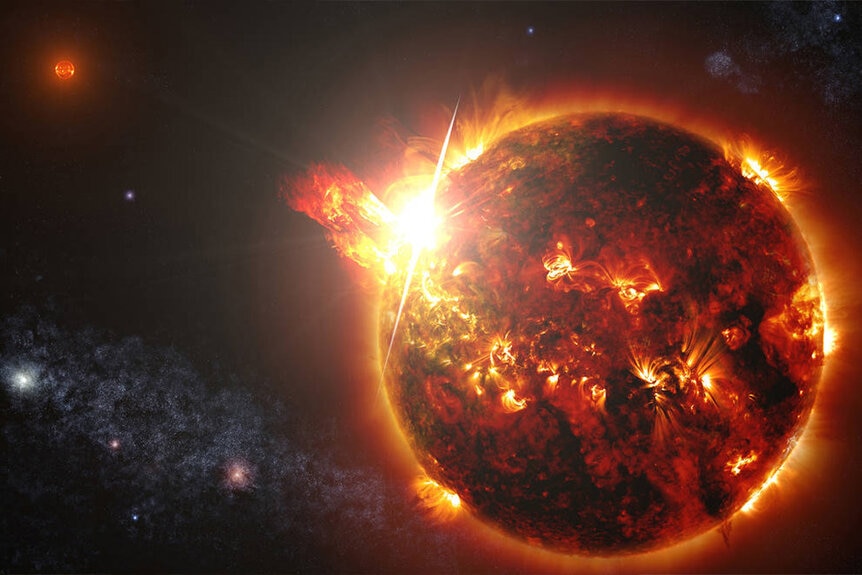Create a free profile to get unlimited access to exclusive videos, sweepstakes, and more!
Three Solar Storm Blasts Are on a Collision Course with Earth
Someone tell the Sun to pick on someone its own size!
In SYFY’s Resident Alien (streaming now on Peacock) an intelligent alien species sends an emissary to our humble planet with a device meant to wipe our species from the face of the Earth. We’ve become pretty comfortable calling the shots around here and the idea that there are incredibly powerful cosmic forces (alien or otherwise) capable of knocking us off our pedestal is an uncomfortable one. Still, those forces exist and every once in a while they get aimed in our direction.
RELATED: Earth Narrowly Missed a Solar Storm Apocalypse in 2012
We’re presently nearing the peak of the Sun’s 11-year solar cycle, a time during which the Sun gets a little overactive and starts firing bullets of plasma every which way. Solar flares and coronal mass ejections (CMEs) are increasing in frequency and some of those are bound to smack our planet around a little. With that in mind, scientists have their eyes peeled and just clocked a barrage of solar slugs headed our way.
A Trio of Solar Blasts Are Headed Our Way
On November 27, the Space Weather Prediction Center at the National Oceanic and Atmospheric Administration (NOAA) detected multiple Earth-facing CMEs blasting off from the surface of the Sun. Right now, massive chunks of charged plasma, sloughed off bits of the Sun itself, are racing toward us on a collision course, prompting NOAA to release a geomagnetic storm watch for November 30 through December 1.
The CMEs were recorded by one of NOAA’s GOES satellites, short for Geostationary Operational Environmental Satellites. Using satellites and other scientific instruments we can get a little bit of advance warning for incoming plasma blasts. That’s because their light gets here in about 8 minutes, whereas the actual CME blast can take a few days to cross the distance.
RELATED: Solar Maximum Will Be Earlier, Stronger, and Last Longer
Particles from the earliest CME are expected to impact the planet as early as the evening of November 29, in a relatively light glancing blow. After that, at least two more CMEs will strike, potentially more directly. Fortunately, there is very little to worry about. The Space Weather Prediction Center anticipates a G1 storm (the lowest slot on the geomagnetic storm scale) on November 30. We may see some minor power grid fluctuations, but few other consequences.
The storm could ramp up a little the following day, transforming itself into a G2 space weather event. At that level, the storm could cause more lasting damage to electrical infrastructure and present a minor threat to orbiting spacecraft. Still, the effects are expected to be minor and all three CMEs will likely pass without incident. We’re lucky to have an active electromagnetic field of our own to protect ourselves against incredible cosmic sucker punches.
If ordinary people are impacted at all, it will probably be by a slightly larger than average probability of seeing the aurora paint colorful pictures across the sky.
See another kind of space-based superweapon in Resident Alien, streaming now on Peacock.































